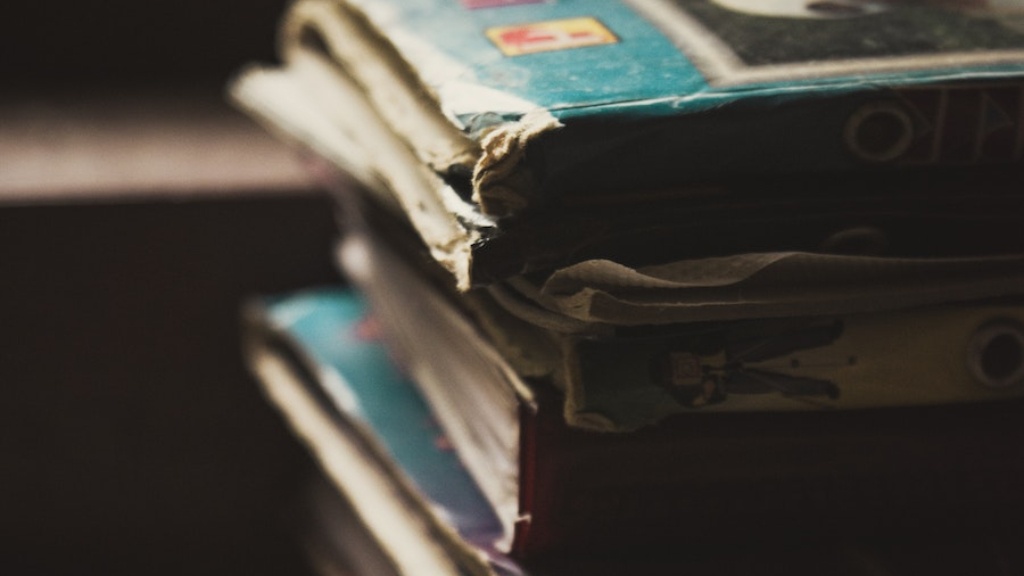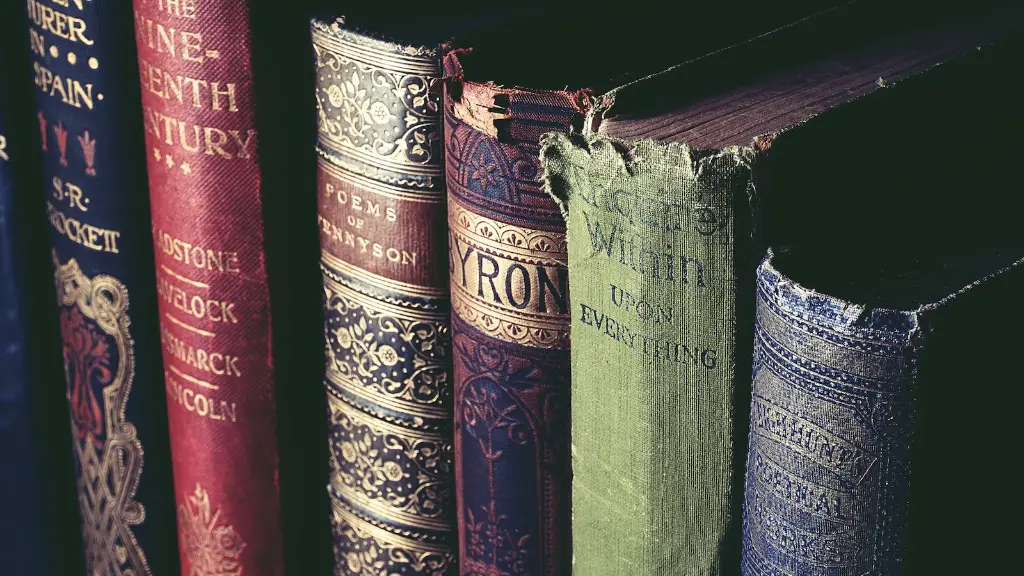Rhythm And Meter
Paying attention to the rhythm and meter of poetry allows for the unique flow and impact of words to be further appreciated. After all, language is composed of sound and the way the poet arranges it. To be able to identify the rhythm and meter of a poem, it is important to familiarise ourselves with some of the terms which can help us to understand and appreciate the poet’s craft.
One important term is accent. Accent refers to the number of syllables within a line, as well as their distribution. For example, a poem might be mainly composed of lines which have two syllables, and three syllables, as long as they are evenly distributed.
Another term is accentual-syllabic verse. This type of verse pays attention to the number of stressed words and syllables. In other words, for accentual-syllabic verse, the emphasis is placed on the number of syllables, as opposed to their distribution.
A third term is rhythm. This refers to the tempo at which syllables and lines are repeated. Thus the rhythm of a poem helps the reader make sense of it. As a result it can be perceived in its entirety.
Finally, meter is the relationship between accents and syllables. Meter is used to determine the rhythm. As a reader, you may determine whether a specific line has a steady rhythm by counting the number of accents or syllables, or both.
Hearing The Poem
One way to identify the rhythm and meter of a poem is to listen to its sound. As a reader, you need to be able to identify the rhythm and meter without the aid of a metronome.
When reading a poem aloud, be sure to place emphasis on the stressed words. This will ensure that the readers are able to perceive the poem in its entirety. It will also help them understand the poet’s intention.
In a sense, paying attention to the sound of the poem can also help to make it concrete. In other words, the stress and rhythm of words can be used to communicate the poem’s essense. For example, a romantic poem may be read in a slow and gentle tempo, pleasing to the ears of the listeners.
Similarly, a poem about war may be read aloud in a forceful manner, providing evidence of the poet’s intent.
Contextualising The Poem
It is important to keep in mind that the rhythm and meter of a poem are interdependent. Thus, understanding the context of the poem can be just as helpful as examining its sound.
When reading a poem, take time to consider the meaning of the words. This will help you to determine the poet’s intended message. This could range from an invitation to reflect on an idea, or a warning of a looming danger.
In addition to analysing the lines, it is also necessary to consider the rhythm, meter and punctuation in order to understand the poem’s meaning. Pay attention to the lines, stanzas and phrases to identify the mood of the poem. This will allow you to identify how each individual line fits into the bigger picture.
Moreover, consider the language and sound of the poet – the use of alliteration, onomatopoeia and rhymes will all contribute to the shape of the poem.
Interpreting The Words
After analysing the sound, context and meaning of the poem, it is important to interpret the poem as a whole.
In some cases, the poet may choose to employ a particular pattern in order to convey a certain message. For example, a stanza could incorporate a repeating sound in order to express a sense of urgency. Alternatively, a metrical pattern may be inconsistent, providing evidence of the poet’s struggle.
Ultimately, it is important to remember that the rhythm and meter of a poem help the reader to further understand its emotion, intentions and meaning.
Exploring The Various Poetic Forms
In addition to understanding the rhythm and meter of a poem, it is also important to be familiar with the various poetic forms. By doing so, readers can determine how the poet has used particular forms to construct the poem.
For example, a sonnet is composed of fourteen lines and is often used to express love or other powerful emotions. Haikus are composed of three lines and are commonly used to convey a sense of calmness and harmony. On the other hand, free verse does not adhere to any structure and is often used to express sentiments of surprise and freedom.
By exploring the various poetic forms, readers will be able to identify the poet’s purpose and gain further insight into their artistry.
Practicing Writing Poetry
In order to gain a better understanding of the rhythm and meter of poetry, it is useful to practice writing poetry. By doing so, readers can gain first-hand experience of crafting their own pieces.
As an exercise, readers may consider writing a haiku. As mentioned earlier, haikus are composed of three lines and are commonly used to express a sentiment of serenity. Remember to pay attention to the rhythm and meter when writing a haiku – it should have five syllables in the first line, seven syllables in the second, and five in the last.
Using prompts to assist the writing process can also be beneficial. For example, consider a prompt such as ‘The beauty of nature is enormous’. Using this prompt, readers can explore their own creativity and craft a poem.
Researching The Poet
In order to gain a deeper appreciation of the emotion, rhythm and meter of a poem, it is useful to research the poet. By doing so, readers can gain insight into the poet’s motivations and inspirations.
Readers could investigate the poet’s background, experiences and ideologies. Furthermore, readers may pay attention to the themes used in other pieces written by the poet. For example, themes such as deep longing or a sense of injustice.
With regards to the rhythm and meter, readers should consider the poet’s style. Do they use a regular meter? Is it easy for the reader to remember the rhythm of their work? What is the genre which the poet typically produces?
In conclusion, readers may benefit from familiarising themselves with the rhythm and meter of poetry, as this will enable them to better appreciate the poet’s craft. Through the use of sound and context, readers can gain insight into the poet’s intentions and inspirations.
Recognising Poetic Devices
In order to further appreciate the rhythm and meter of a poem, readers should pay attention to the various poetic devices used in the poem. Examples of poetic devices include alliteration, assonance, metaphor, puale and repetition, amongst others.
These devices may be employed by the poet to further convey the respective emotion, intention and message of the poem. For instance, alliteration could be used to create an environment of playfulness and fun. On the other hand, puales may be used to add a sense of mystery and wonder.
Reading the poem more than once can assist readers in better understanding how the poetic devices are used. Furthermore, readers may take notes on their reading, such as noting down any particular poetic device employed. By doing so, readers can gain a clearer image of the poet’s intentions.
Learning How To Write Poetry
Learning to write poetry can assist readers in gaining a better understanding of the rhythm and meter of poetry. By writing and experimenting with various ideas, readers can gain insight into the building blocks of poetry.
Firstly, readers should consider their audience when deciding what to write. Knowing and understanding the audience’s objectives is essential in crafting a successful poem. Secondly, they should consider the structure, topic and purpose of their poem.
In terms of metre and rhythm, readers should consider the number of syllables. When crafting a poem, readers should ensure the number of syllables is appropriate and relevant to the topic.
Learning to write poetry can also assist readers with understanding their intended message, as writing can help to clarify our thoughts and feelings.
Assessing Poetry From A Critical Perspective
One way to gain a deeper appreciation of the rhythm and meter of poetry is by critically assessing a particular piece. Doing so requires a deep understanding of the topic, as well as a clear understanding of the literary conventions used by the poet.
Firstly, readers should read the poem aloud and consider the sound of the piece. Listen for any repetition and note down any particular poetic devices used. Secondly, readers should take note of the contextual clues present in the piece – the themes and motifs used.
Readers should then consider the poet’s intention and message. Ask yourself – why has the poet chosen to use these particular words?
Finally, readers should think about the impact which the poem has had on them. Does it evoke an emotional response or leave any lasting impression?
By assessing poetry from a critical perspective, readers can expect to gain a deeper appreciation of the of the poem and its rhythm and metre.


